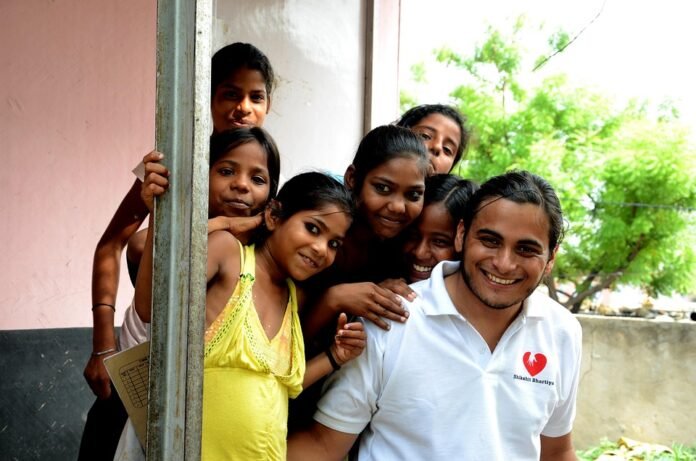Of course. Here is an article on India’s foreign policy, focusing on the theme of balancing global ambitions with regional realities.
The Elephant’s Dance: India’s Foreign Policy Balancing Global Ambitions and Regional Realities
In the grand theatre of 21st-century geopolitics, India is performing a complex and delicate dance. On one hand, it projects itself as a resurgent global power—a "Vishwa Guru" or world teacher—with ambitions of shaping international norms and securing a permanent seat at the high table of global governance. On the other, it remains deeply anchored, and often constrained, by the turbulent realities of its immediate neighborhood. This inherent tension between its global aspirations and regional compulsions defines the essence of India’s contemporary foreign policy: a pragmatic, and at times precarious, balancing act.
Historically rooted in the doctrine of non-alignment, India has evolved its approach to navigate a world that is no longer bipolar but multipolar and fiercely competitive. The new watchword is "multi-alignment," a philosophy of pursuing issue-based coalitions and maintaining strategic autonomy. It is this doctrine that allows India to be a member of the Quad alongside the US, Japan, and Australia, while simultaneously participating in the Shanghai Cooperation Organisation (SCO) with China and Russia. This is not fence-sitting; it is a calculated strategy to maximize national interest in a world where old alliances are fluid and new partnerships are transactional.
The Pursuit of a Global Role
India’s global ambitions are clear and manifold. As the world’s fifth-largest economy and its most populous nation, New Delhi rightfully seeks a role in global decision-making that is commensurate with its size and influence. This is most evident in its long-standing campaign for a permanent seat on the UN Security Council, an institution it argues is anachronistic and unrepresentative of the current world order.
The G20 Presidency in 2023 served as a powerful platform for these ambitions. By positioning itself as the "Voice of the Global South," India sought to bridge the gap between developed and developing nations, championing issues like climate finance, debt relief, and digital public infrastructure. This was a masterclass in leveraging a global forum to project leadership and build consensus, moving beyond narrow self-interest to address collective challenges.
India’s partnerships reflect this global outlook. The deepening strategic relationship with the United States, cemented through security cooperation and technology sharing, is a cornerstone of its Indo-Pacific strategy. Simultaneously, India has carefully preserved its time-tested, albeit complicated, relationship with Russia, particularly for defense and energy needs, refusing to bow to Western pressure over the Ukraine conflict. This demonstrates a core tenet of its policy: the right to make independent choices based on its own strategic calculus.
The Unyielding Regional Realities
While India’s gaze is fixed on the global horizon, its feet are firmly planted in the complex terrain of South Asia. The "Neighborhood First" policy is a recognition that global stature is impossible without regional stability. Yet, this neighborhood presents India’s most formidable challenges.
The primary and most defining regional reality is the rise of an assertive China. The ongoing border standoff in the Himalayas is more than a territorial dispute; it is a stark reminder of the power imbalance and Beijing’s willingness to challenge India’s sovereignty. China’s expanding economic and strategic footprint across South Asia—from ports in Sri Lanka and Pakistan to infrastructure projects in Nepal and Bangladesh—presents a persistent strategic encirclement that New Delhi must constantly counter. This "China conundrum" forces India to divert significant resources and diplomatic energy toward managing its northern border, acting as a gravitational pull on its global aspirations.
Pakistan, while a less potent strategic threat than in the past, remains a source of chronic instability. The unresolved issue of cross-border terrorism continues to be a major security concern, making any meaningful dialogue difficult and regional cooperation through forums like SAARC virtually defunct.
Beyond these two major adversaries, India must navigate delicate relationships with smaller neighbors who are often caught in the cross-currents of Sino-Indian competition. India has positioned itself as a reliable partner and a "first responder" in times of crisis, providing development aid, vaccines, and disaster relief to countries like Sri Lanka, Nepal, and the Maldives. This is a crucial, if challenging, effort to maintain influence in a region ripe with external interference.
Multi-Alignment: The Bridge Between Worlds
How does India reconcile these two seemingly contradictory poles? The answer lies in its doctrine of strategic autonomy expressed through multi-alignment.
This policy allows India to:
- Collaborate with the West: Engage with the Quad and other Western-led initiatives like I2U2 (India, Israel, UAE, USA) to counter Chinese influence in the maritime and technological domains.
- Engage with Adversaries: Participate in platforms like the SCO and BRICS to maintain lines of communication with China and Russia, working on areas of convergent interest like counter-terrorism and economic development.
- Champion its Own Path: By refusing to join any formal alliance, India retains the flexibility to act in its own best interest on a case-by-case basis, whether it is purchasing Russian oil or conducting military exercises with the United States.
Conclusion: The Path Forward
India’s foreign policy is a continuous, dynamic negotiation between its potential and its problems. It is a testament to the nation’s growing confidence that it is able to manage these competing pressures with increasing dexterity. The success of this balancing act will ultimately determine India’s destiny in the 21st century. The challenges—an aggressive China, an unstable neighborhood, and a volatile global landscape—are immense. But so too are the opportunities for a nation that has learned to dance with giants without losing its own rhythm. The elephant’s dance continues, deliberate and determined, on the world stage.

